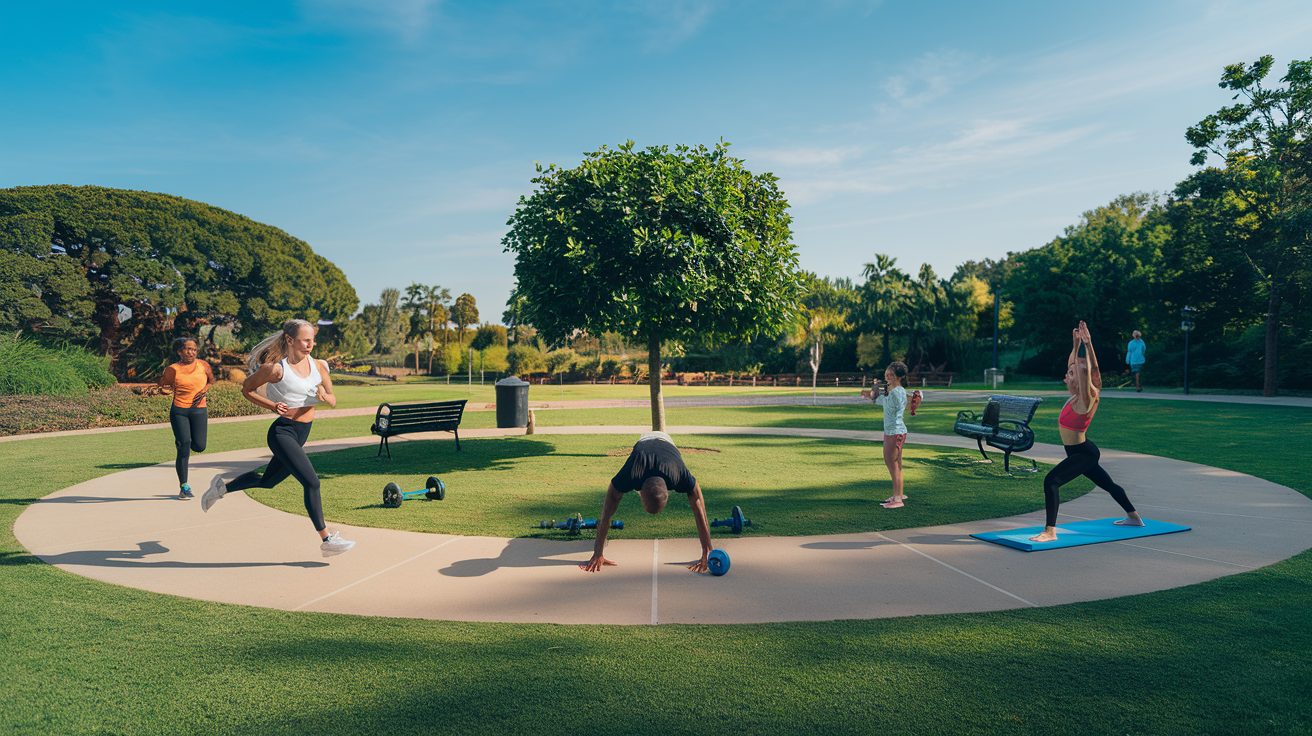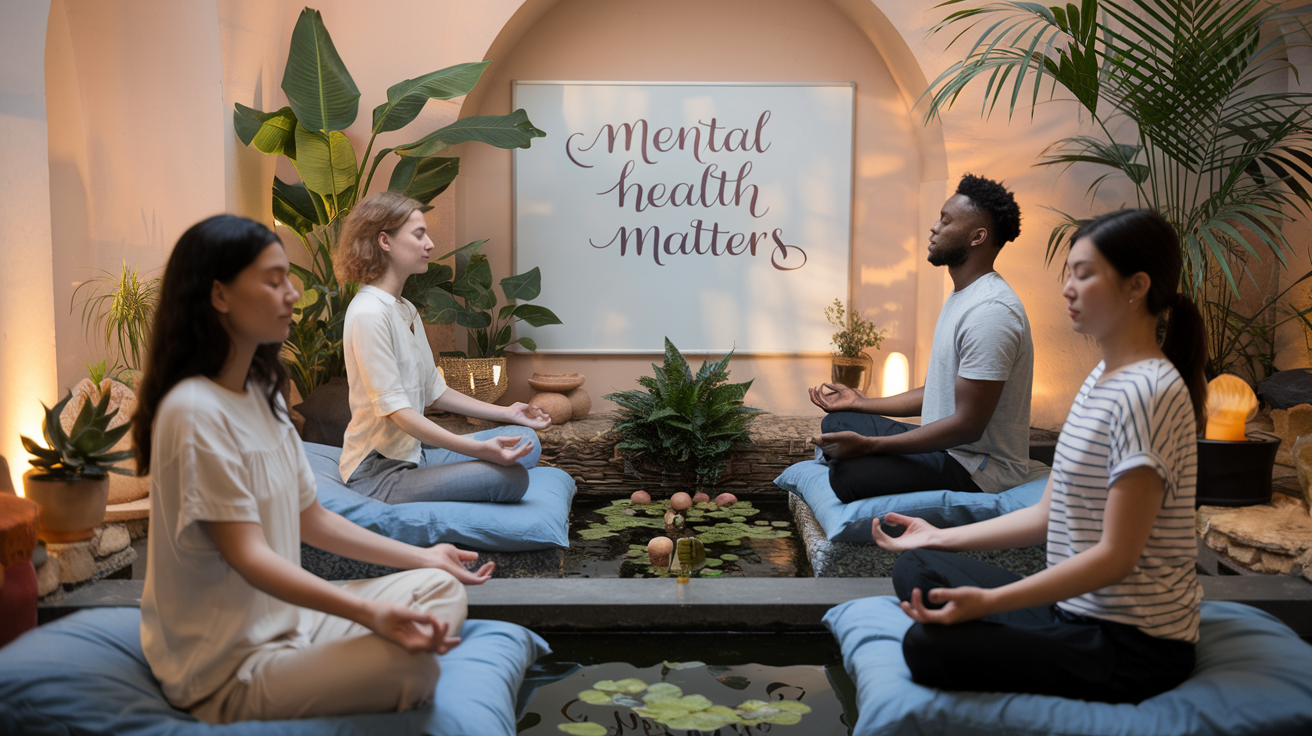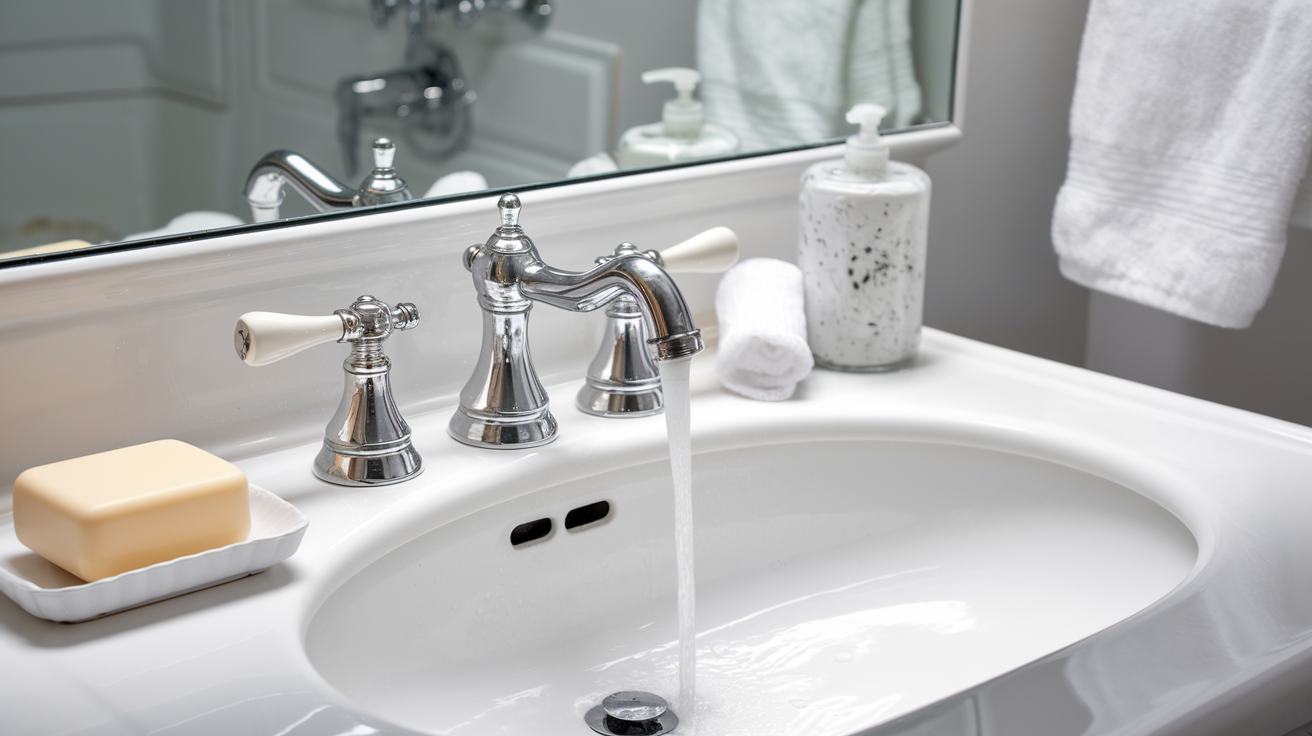Pillars of Good Health: Discover 10 life-changing secrets to transform your wellness, boost energy, and elevate happiness. These Pillars of Good Health are essential for a vibrant life. Understanding the Pillars of Good Health is key to achieving long-term wellness.

Table of Contents
Key to Good Health: 10 Transformative Secrets for All
Incorporating the Pillars of Good Health into your daily routine can greatly enhance your overall wellness.

The Pillars of Good Health are not just tips; they are transformative practices that lead to a balanced life.
Embracing the Pillars of Good Health will empower your journey towards a healthier lifestyle.
Each of the Pillars of Good Health plays a vital role in maintaining physical and mental well-being.
By focusing on the Pillars of Good Health, you can create a more fulfilling life.
Integrating all the Pillars of Good Health is essential for achieving overall wellness.
Are you tired of feeling run down, stressed out, and constantly battling health issues? 🤔 It’s time to unlock the secrets to vibrant health that can transform your life from the inside out. In a world where quick fixes and fad diets dominate headlines, the true path to wellness often gets lost in the noise.
Understanding the Pillars of Good Health can transform your approach to personal wellness.
To achieve a balanced lifestyle, it is crucial to embrace the Pillars of Good Health.
Understanding the Pillars of Good Health can provide you with the tools necessary for a longer, healthier life.
Each of the Pillars of Good Health contributes to a holistic approach to personal wellness.
Practicing the Pillars of Good Health enhances your overall quality of life.
Aligning with the Pillars of Good Health can lead to meaningful changes in your daily routine.
The Pillars of Good Health emphasize the importance of holistic wellness and balanced nutrition.
The Pillars of Good Health guide you towards making informed decisions about your well-being.
Reflecting on the importance of the Pillars of Good Health allows for deeper self-awareness and growth.
Maintaining a focus on the Pillars of Good Health is essential for long-term wellness.
Utilizing the Pillars of Good Health can lead to greater happiness and satisfaction in life.
Integrating the Pillars of Good Health creates a balanced and fulfilling lifestyle.
Each Pillar of Good Health contributes to a stronger foundation for your physical and mental well-being.
But what if we told you that the key to good health isn’t a mystery at all? 🗝️ It’s a set of 10 transformative secrets that anyone can master, regardless of age, background, or current fitness level. These aren’t just fleeting trends—they’re time-tested principles that form the foundation of a healthy, balanced life. From nourishing your body with the right foods to cultivating a positive mindset, each secret builds upon the next, creating a holistic approach to wellbeing.
Ready to embark on a journey that will revolutionize your health and happiness? Let’s dive into these 10 game-changing secrets that will empower you to take control of your health and unlock your full potential. Whether you’re looking to boost your energy, improve your mood, or simply feel better in your own skin, these transformative tips are your roadmap to a healthier, more vibrant you. 💪🌟
Integrating the Pillars of Good Health into your daily routine can enhance your lifestyle.
Nourish Your Body with Balanced Nutrition

Embrace whole foods for optimal health
Whole foods are nature’s gift to our health, offering a bounty of nutrients in their most natural and beneficial form. These unprocessed or minimally processed foods provide essential vitamins, minerals, fiber, and phytochemicals that support overall well-being.
To incorporate more whole foods into your diet:
- Choose fresh fruits and vegetables over canned or processed options
- Opt for whole grains like brown rice, quinoa, and oats instead of refined grains
- Select lean meats, fish, and plant-based proteins over processed meat products
- Incorporate nuts, seeds, and legumes for healthy fats and protein
Master portion control
Maintaining a healthy weight and ensuring balanced nutrition hinges on mastering portion control. Here are some strategies to help you manage your portions effectively:
To fully embrace the Pillars of Good Health, consider each aspect of your health and how they interconnect.
- Use smaller plates to create the illusion of a fuller meal
- Practice mindful eating by savoring each bite and eating slowly
- Follow the “hand” method for estimating portions:
- Palm-sized portion for protein
- Fist-sized portion for vegetables
- Cupped hand for carbohydrates
- Thumb-sized portion for fats
| Food Group | Portion Size | Visual Reference |
|---|---|---|
| Protein | 3-4 oz | Palm of your hand |
| Vegetables | 1 cup | Baseball |
| Grains | 1/2 cup | Computer mouse |
| Fruits | 1 medium | Tennis ball |
Hydrate for vitality
Proper hydration is crucial for maintaining bodily functions, regulating temperature, and supporting overall health. Water is the best choice for hydration, but you can also include:
- Herbal teas
- Infused water with fruits or herbs
- Low-fat milk or plant-based alternatives
- Fresh fruit and vegetable juices (in moderation)
Reflecting on the Pillars of Good Health can motivate you to live with intention.
Aim for 8-10 glasses of water per day, adjusting based on your activity level and climate.
Understand macronutrients and micronutrients
When you focus on the Pillars of Good Health, you build a resilient and joyful life.
A balanced diet requires a proper mix of both macronutrients and micronutrients. Here’s a brief overview:
Macronutrients (needed in larger quantities):
- Carbohydrates: Provide energy for the body
- Proteins: Essential for building and repairing tissues
- Fats: Important for hormone production and nutrient absorption
Micronutrients (needed in smaller quantities):
- Vitamins: Organic compounds necessary for various bodily functions
- Minerals: Inorganic elements required for proper body function
To ensure you’re getting a good balance of both, focus on eating a variety of colorful fruits and vegetables, lean proteins, whole grains, and healthy fats. This diverse approach to nutrition will help you meet your body’s needs for both macro and micronutrients.
By embracing these principles of balanced nutrition, you’ll be taking a significant step towards nourishing your body and laying the foundation for optimal health. Next, we’ll explore how regular physical activity complements a nutritious diet in promoting overall well-being.
Prioritize Regular Physical Activity
Pillars of Good Health

Find enjoyable exercise routines
Discovering physical activities that bring you joy is the key to maintaining a consistent exercise regimen. When you genuinely enjoy your workouts, you’re more likely to stick with them long-term. Here are some popular and fun exercise options to consider:
- Dance classes (Zumba, hip-hop, salsa)
- Team sports (basketball, soccer, volleyball)
- Outdoor activities (hiking, cycling, rock climbing)
- Martial arts (karate, jiu-jitsu, kickboxing)
- Group fitness classes (yoga, pilates, HIIT)
Remember, the best exercise routine is one that you’ll actually do consistently. Don’t be afraid to try new activities until you find what resonates with you.
Incorporate strength training
Strength training is crucial for overall health and fitness. It helps build lean muscle mass, increases bone density, and boosts metabolism. Here’s a simple breakdown of strength training benefits and exercises:
Embracing the Pillars of Good Health is an integral part of a healthy living strategy.
| Benefits | Beginner Exercises | Advanced Exercises |
|---|---|---|
| Increased muscle strength | Bodyweight squats | Barbell deadlifts |
| Improved bone density | Push-ups | Bench press |
| Enhanced metabolism | Lunges | Olympic lifts |
| Better posture | Plank holds | Pull-ups |
Aim to incorporate strength training exercises 2-3 times per week, focusing on all major muscle groups.
Boost cardiovascular health through aerobic exercises
Aerobic exercises, also known as cardio, are essential for heart health and overall endurance. These activities elevate your heart rate and improve lung capacity. Some effective cardio exercises include:
- Brisk walking or jogging
- Swimming
- Cycling
- Jumping rope
- High-intensity interval training (HIIT)
Strive for at least 150 minutes of moderate-intensity or 75 minutes of vigorous-intensity aerobic activity per week.
Practice flexibility and balance exercises
Flexibility and balance exercises are often overlooked but are crucial for maintaining mobility and preventing injuries as we age. Incorporate these exercises into your routine:
- Yoga: Enhances flexibility, balance, and mindfulness
- Pilates: Improves core strength and body awareness
- Tai Chi: Boosts balance and reduces stress
- Static stretching: Increases flexibility and range of motion
- Balance exercises: Single-leg stands, heel-to-toe walks
Dedicate at least 10-15 minutes to flexibility and balance exercises daily, or join weekly classes focused on these aspects.
Make movement a daily habit
Integrating physical activity into your daily routine is essential for long-term health benefits. Here are some practical ways to increase your daily movement:
- Take the stairs instead of the elevator
- Walk or bike for short errands
- Stand up and stretch every hour during work
- Use a standing desk or treadmill desk
- Park farther away from your destination
By prioritizing regular physical activity and incorporating these diverse exercise types, you’ll be well on your way to improved overall health and well-being. Next, we’ll explore the importance of managing stress effectively to complement your physical fitness journey.
Cultivate Restful Sleep Habits

Establish a consistent sleep schedule
Creating a consistent sleep schedule is crucial for optimizing your body’s natural circadian rhythm. By going to bed and waking up at the same time every day, even on weekends, you train your body to expect sleep at specific times. This regularity helps improve sleep quality and daytime alertness.
Here are some tips to establish a consistent sleep schedule:
- Set a fixed bedtime and wake-up time
- Create a pre-sleep routine
- Avoid naps late in the day
- Adjust gradually if changes are needed
| Time | Activity |
|---|---|
| 9:00 PM | Begin winding down |
| 9:30 PM | Start pre-sleep routine |
| 10:00 PM | Lights out |
| 6:00 AM | Wake up |
Create a sleep-friendly environment
Your bedroom environment plays a significant role in the quality of your sleep. A sleep-friendly space promotes relaxation and minimizes disturbances, allowing you to fall asleep faster and stay asleep longer.
Key elements of a sleep-friendly environment include:
- Comfortable mattress and pillows
- Cool room temperature (60-67°F or 15-19°C)
- Darkness (use blackout curtains or an eye mask)
- Quiet surroundings (consider white noise machines if needed)
- Clean and clutter-free space
Limit screen time before bed
The blue light emitted by electronic devices can interfere with your body’s production of melatonin, the hormone responsible for regulating sleep. To improve your sleep quality, it’s essential to limit screen time before bed.
Try these strategies:
Recognizing the significance of the Pillars of Good Health can transform your approach to wellness.
- Set a “digital curfew” 1-2 hours before bedtime
- Use blue light filtering apps or glasses if screen use is unavoidable
- Replace screen time with relaxing activities like reading or gentle stretching
- Keep electronic devices out of the bedroom
Committing to the Pillars of Good Health can enhance your overall well-being.
Integrating the Pillars of Good Health into your routine will lead to lasting positive changes.
Practice relaxation techniques for better sleep
Incorporating relaxation techniques into your bedtime routine can help calm your mind and prepare your body for sleep. These practices can be especially beneficial if you struggle with racing thoughts or anxiety at night.
Effective relaxation techniques for better sleep include:
- Deep breathing exercises
- Progressive muscle relaxation
- Guided imagery or visualization
- Mindfulness meditation
- Gentle yoga or stretching
By implementing these sleep-friendly habits, you’ll be well on your way to experiencing more restful and rejuvenating sleep. With improved sleep quality, you’ll likely notice enhanced mood, increased energy levels, and better overall health. As we move forward, we’ll explore another crucial aspect of maintaining good health: effective stress management techniques.
Manage Stress Effectively

Develop mindfulness and meditation practices
In our fast-paced world, managing stress effectively is crucial for maintaining good health. One powerful way to combat stress is through mindfulness and meditation practices. These techniques help calm the mind, reduce anxiety, and promote overall well-being.
Start by setting aside just 5-10 minutes each day for mindfulness exercises. Focus on your breath, observe your thoughts without judgment, and bring your attention to the present moment. As you become more comfortable, gradually increase the duration of your practice.
Here are some popular mindfulness and meditation techniques to try:
- Body scan meditation
- Loving-kindness meditation
- Mindful walking
- Guided imagery
- Transcendental meditation
| Technique | Description | Benefits |
|---|---|---|
| Body scan | Systematically focus on different parts of your body | Reduces tension, improves body awareness |
| Loving-kindness | Cultivate feelings of compassion for yourself and others | Enhances positive emotions, reduces negative thoughts |
| Mindful walking | Pay attention to each step and your surroundings | Combines physical activity with mindfulness |
Engage in stress-reducing activities
Incorporating stress-reducing activities into your daily routine can significantly impact your overall stress levels. Choose activities that you enjoy and find relaxing. Some effective stress-busting activities include:
- Yoga or tai chi
- Deep breathing exercises
- Progressive muscle relaxation
- Journaling or expressive writing
- Engaging in creative hobbies like painting or gardening
Regular participation in these activities can help lower cortisol levels, improve mood, and increase resilience to stress.
Learn time management skills
Poor time management often leads to increased stress levels. By improving your ability to organize and prioritize tasks, you can reduce feelings of overwhelm and increase productivity. Here are some effective time management strategies:
- Use the Eisenhower Matrix to prioritize tasks based on urgency and importance
- Implement the Pomodoro Technique for focused work sessions
- Create daily to-do lists and schedule tasks in a calendar
- Learn to delegate tasks when possible
- Set realistic goals and deadlines
Build a support network
Having a strong support network is crucial for managing stress effectively. Surrounding yourself with positive, supportive people can provide emotional comfort, practical assistance, and valuable perspectives during challenging times.
To build and maintain a support network:
- Nurture existing relationships with family and friends
- Join clubs or groups related to your interests
- Volunteer in your community
- Attend social events or networking opportunities
- Consider joining a support group for specific challenges you may face
Remember, it’s not just about having a large network, but rather cultivating meaningful connections with people who genuinely care about your well-being.
By implementing these stress management techniques, you’ll be better equipped to handle life’s challenges and maintain good health. As we move forward, we’ll explore another crucial aspect of overall wellness: the importance of fostering positive relationships in our lives.
Foster Positive Relationships

Nurture meaningful connections
Building and maintaining strong, positive relationships is a cornerstone of good health and overall well-being. Meaningful connections provide emotional support, reduce stress, and contribute to a sense of belonging. To nurture these relationships:
- Prioritize quality time with loved ones
- Show appreciation and gratitude regularly
- Be present and attentive during interactions
- Share experiences and create memories together
By investing in these connections, you’ll create a support network that enhances your mental and emotional health.
Practice active listening and empathy
Active listening and empathy are crucial skills for fostering positive relationships. When you truly listen and empathize with others, you create deeper connections and mutual understanding. Here are some techniques to improve your active listening and empathy:
- Maintain eye contact
- Avoid interrupting
- Ask clarifying questions
- Reflect on what you’ve heard
- Validate the other person’s feelings
| Active Listening Technique | Description | Benefits |
|---|---|---|
| Paraphrasing | Restating the speaker’s message in your own words | Ensures understanding and shows attentiveness |
| Summarizing | Recapping the main points of the conversation | Demonstrates comprehension and helps clarify information |
| Non-verbal cues | Using body language to show engagement | Encourages the speaker and builds rapport |
By mastering these skills, you’ll strengthen your relationships and create a more supportive environment for yourself and others.
Set healthy boundaries
Establishing and maintaining healthy boundaries is essential for fostering positive relationships. Boundaries help you protect your well-being while respecting others. Here’s how to set and maintain healthy boundaries:
- Identify your limits and communicate them clearly
- Learn to say “no” when necessary
- Respect others’ boundaries as well
- Be consistent in enforcing your boundaries
Remember that healthy boundaries contribute to more balanced and fulfilling relationships, which in turn support your overall health and well-being.
Engage in social activities
Participating in social activities is an excellent way to foster positive relationships and improve your mental health. Social engagement provides opportunities for connection, learning, and personal growth. Consider these options:
- Join clubs or groups based on your interests
- Volunteer for causes you care about
- Attend community events or classes
- Organize gatherings with friends and family
By actively engaging in social activities, you’ll expand your social network, develop new skills, and create meaningful experiences that contribute to your overall well-being.
Now that we’ve explored the importance of fostering positive relationships, let’s move on to discussing the significance of prioritizing mental health in our journey towards optimal well-being.
Prioritize Mental Health

Practice self-care regularly
Self-care is a cornerstone of mental health, encompassing activities that nurture your mind, body, and spirit. Incorporating regular self-care practices into your routine can significantly improve your overall well-being and resilience.
Here are some effective self-care strategies:
- Mindfulness meditation
- Engaging in hobbies
- Taking relaxing baths
- Reading for pleasure
- Practicing yoga or gentle stretching
Remember, self-care is not selfish; it’s essential for maintaining good mental health and preventing burnout.
Seek professional help when needed
Recognizing when to seek professional help is crucial for maintaining optimal mental health. Mental health professionals can provide valuable insights, coping strategies, and treatment options tailored to your specific needs.
Consider seeking professional help if you experience:
- Persistent feelings of sadness or anxiety
- Difficulty managing daily tasks
- Changes in sleep or appetite
- Thoughts of self-harm or suicide
Remember, seeking help is a sign of strength, not weakness. Many people benefit from therapy or counseling at various points in their lives.
Utilizing the Pillars of Good Health can lead to greater happiness and satisfaction in life.
Challenge negative thought patterns
As you implement the Pillars of Good Health, remember to celebrate your progress.
Negative thought patterns can significantly impact our mental health and overall well-being. By learning to identify and challenge these patterns, we can develop a more balanced and positive outlook on life.
Here are some common negative thought patterns and strategies to challenge them:
| Negative Thought Pattern | Strategy to Challenge |
|---|---|
| All-or-nothing thinking | Look for shades of gray |
| Overgeneralization | Find specific evidence |
| Catastrophizing | Consider realistic outcomes |
| Personalization | Recognize external factors |
| Mind reading | Check assumptions with others |
Practicing these strategies can help rewire your brain to adopt more positive and realistic thought patterns over time.
Develop emotional intelligence
Emotional intelligence (EQ) is the ability to recognize, understand, and manage our own emotions, as well as the emotions of others. Developing EQ can significantly improve your mental health, relationships, and overall quality of life.
Key components of emotional intelligence include:
- Self-awareness
- Self-regulation
- Motivation
- Empathy
- Social skills
To improve your emotional intelligence, try these exercises:
- Practice active listening in conversations
- Keep a journal to reflect on your emotions
- Use “I” statements to express your feelings
- Take time to understand others’ perspectives
By prioritizing mental health through these strategies, you can build resilience, improve your overall well-being, and better navigate life’s challenges. Remember that mental health is just as important as physical health, and investing time and effort in both is crucial for a balanced and fulfilling life. In the next section, we’ll explore the importance of maintaining proper hygiene and its impact on overall health.
Maintain Proper Hygiene

Practice good oral care
Maintaining proper oral hygiene is crucial for overall health and well-being. Good oral care not only keeps your smile bright but also prevents various dental and systemic health issues. Here are some essential practices to incorporate into your daily routine:
- Brush twice daily with fluoride toothpaste
- Floss at least once a day
- Use an antiseptic mouthwash
- Replace your toothbrush every 3-4 months
- Schedule regular dental check-ups
| Oral Care Practice | Frequency | Benefits |
|---|---|---|
| Brushing | Twice daily | Removes plaque, prevents cavities |
| Flossing | Once daily | Cleans between teeth, prevents gum disease |
| Mouthwash | Once daily | Kills bacteria, freshens breath |
| Dental check-ups | Every 6 months | Professional cleaning, early detection of issues |
Develop a skincare routine
Your skin is your body’s largest organ and deserves proper care. A consistent skincare routine helps maintain healthy, glowing skin and can prevent various skin conditions. Consider the following steps:
- Cleanse: Remove dirt and oil twice daily
- Tone: Balance skin pH and remove remaining impurities
- Moisturize: Keep skin hydrated and supple
- Protect: Apply sunscreen daily to prevent sun damage
Don’t forget to exfoliate 1-2 times a week to remove dead skin cells and promote cell turnover.
Keep your living space clean
A clean living environment is essential for good health and hygiene. Regular cleaning helps reduce allergens, bacteria, and other harmful microorganisms. Implement these cleaning habits:
- Vacuum or sweep floors at least twice a week
- Dust surfaces regularly
- Wash bedding weekly
- Clean and disinfect high-touch areas daily (e.g., doorknobs, light switches)
- Declutter regularly to minimize dust accumulation
Wash hands frequently
Hand hygiene is one of the most effective ways to prevent the spread of infections and diseases. Make handwashing a habit, especially:
- Before and after preparing food
- Before eating
- After using the bathroom
- After touching pets
- After coughing, sneezing, or blowing your nose
- When returning home from public places
Use soap and water, scrubbing for at least 20 seconds. When soap and water aren’t available, use an alcohol-based hand sanitizer with at least 60% alcohol content.
By incorporating these hygiene practices into your daily routine, you’ll significantly reduce your risk of illness and promote overall health. Remember, good hygiene is not just about personal cleanliness; it also contributes to a healthier community by preventing the spread of diseases. As we move forward, we’ll explore how staying intellectually stimulated can further enhance your overall well-being and contribute to a healthier, more fulfilling lifestyle.
Stay Intellectually Stimulated

Engage in lifelong learning
Embracing a mindset of continuous learning is crucial for maintaining cognitive health and intellectual vitality. Lifelong learning not only keeps your mind sharp but also opens up new opportunities for personal and professional growth. Here are some effective ways to incorporate ongoing education into your daily life:
- Attend workshops or seminars in areas of interest
- Enroll in online courses or MOOCs (Massive Open Online Courses)
- Listen to educational podcasts during commutes or while exercising
- Join local study groups or book clubs
Take up new hobbies
Exploring new hobbies is an excellent way to stimulate your mind and broaden your horizons. Engaging in diverse activities can help develop new neural pathways and enhance cognitive flexibility. Consider the following options:
- Learn a musical instrument
- Try your hand at painting or sculpting
- Start a garden or learn about botany
- Explore photography or videography
Challenge your brain with puzzles and games
Mental exercises in the form of puzzles and games can significantly boost cognitive function and problem-solving skills. Incorporating these activities into your routine can be both fun and beneficial for brain health:
The Pillars of Good Health guide you towards making informed decisions about your well-being.
| Game Type | Benefits | Examples |
|---|---|---|
| Word games | Vocabulary enhancement, language skills | Crosswords, Scrabble |
| Number puzzles | Mathematical thinking, logical reasoning | Sudoku, KenKen |
| Strategy games | Critical thinking, planning skills | Chess, Go |
| Memory games | Improved recall, concentration | Simon, Concentration |
Embracing the Pillars of Good Health can foster a supportive environment for personal growth.
Read regularly
Reading is a powerful tool for intellectual stimulation and personal growth. It expands your knowledge base, improves vocabulary, and enhances empathy and understanding. To make reading a habit:
- Set aside dedicated reading time each day
- Join a book club to discuss and analyze literature
- Explore different genres to broaden your perspective
- Combine reading with other activities, such as audiobooks while exercising
By incorporating these intellectually stimulating activities into your daily routine, you’ll not only maintain cognitive health but also enrich your life with new knowledge and experiences. Remember, the key is consistency and variety in your intellectual pursuits. As we continue to explore the secrets to good health, we’ll next delve into the importance of preventive healthcare and how it contributes to overall well-being.
Practice Preventive Healthcare

Schedule regular check-ups
Regular check-ups are the cornerstone of preventive healthcare. By scheduling and attending routine medical appointments, you can catch potential health issues early and maintain optimal wellness. Here’s why regular check-ups are crucial:
- Early detection of diseases
- Monitoring of vital health metrics
- Opportunity to discuss health concerns with professionals
- Personalized health advice and recommendations
To make the most of your check-ups, consider the following:
- Create a schedule based on your age, gender, and risk factors
- Prepare questions for your healthcare provider in advance
- Bring a list of current medications and supplements
- Be honest about your lifestyle habits and health concerns
Stay up-to-date with vaccinations
Vaccinations play a vital role in preventing serious illnesses and protecting public health. Keeping your immunizations current is essential for maintaining good health and reducing the risk of infectious diseases. Here’s a comparison of common vaccinations for adults:
| Vaccine | Recommended Frequency | Protects Against |
|---|---|---|
| Flu shot | Annually | Influenza viruses |
| Tdap | Every 10 years | Tetanus, diphtheria, pertussis |
| HPV | Once (up to age 45) | Human papillomavirus |
| Pneumococcal | Once (65+) | Pneumococcal diseases |
Perform self-examinations
Regular self-examinations are an essential part of preventive healthcare. By familiarizing yourself with your body, you can detect changes early and seek medical attention when necessary. Here are some key self-examinations to incorporate into your routine:
- Skin checks: Look for changes in moles or new growths
- Breast or testicular self-exams: Check for lumps or abnormalities
- Oral health: Inspect your mouth for sores or discoloration
- Body measurements: Monitor weight, waist circumference, and BMI
Understand your family health history
Knowing your family health history is crucial for identifying potential genetic risk factors and tailoring your preventive healthcare strategy. Here’s how to make the most of this information:
- Gather information from immediate and extended family members
- Document major health conditions, age of onset, and causes of death
- Share this information with your healthcare provider
- Use it to guide screening schedules and lifestyle choices
By understanding your genetic predispositions, you can take proactive steps to mitigate risks and maintain good health. Remember, while family history is important, it doesn’t determine your destiny. Lifestyle choices and preventive measures can significantly impact your health outcomes.
Now that we’ve covered the importance of preventive healthcare, let’s explore how cultivating a positive mindset can further enhance your overall well-being and complement these preventive measures.
Cultivate a Positive Mindset

Practice gratitude daily
Cultivating a positive mindset begins with practicing gratitude daily. This simple yet powerful habit can transform your outlook on life and significantly improve your overall well-being. By focusing on the good things in your life, no matter how small, you can shift your perspective and reduce negative thought patterns.
Here are some effective ways to incorporate gratitude into your daily routine:
- Keep a gratitude journal
- Share your appreciation with others
- Practice mindful observation
- Start your day with gratitude meditation
- End your day by reflecting on positive experiences
| Gratitude Practice | Benefits |
|---|---|
| Journaling | Improves self-awareness and mood |
| Expressing appreciation | Strengthens relationships |
| Mindful observation | Enhances present-moment awareness |
| Morning meditation | Sets a positive tone for the day |
| Evening reflection | Promotes better sleep and contentment |
Set achievable goals
Setting achievable goals is crucial for maintaining a positive mindset and fostering personal growth. When you set realistic objectives and accomplish them, you build self-confidence and motivation. This process creates a positive feedback loop that encourages further goal-setting and achievement.
To set effective goals:
- Be specific and clear about what you want to achieve
- Make your goals measurable
- Ensure they are attainable and realistic
- Set relevant goals that align with your values
- Establish a timeframe for achieving each goal
Regularly revisiting the Pillars of Good Health can enhance your motivation and commitment.
Embrace personal growth
Embracing personal growth is an essential aspect of cultivating a positive mindset. By continuously learning and improving yourself, you create a sense of purpose and progress in life. This approach helps you overcome challenges and view obstacles as opportunities for growth rather than setbacks.
Some ways to embrace personal growth include:
- Reading self-improvement books
- Attending workshops or seminars
- Seeking feedback from others
- Trying new experiences and stepping out of your comfort zone
- Developing new skills or hobbies
Celebrate small victories
Acknowledging and celebrating small victories is a powerful way to maintain a positive mindset. By recognizing your progress and achievements, no matter how minor they may seem, you reinforce positive behaviors and boost your self-esteem. This practice helps you stay motivated and focused on your goals, even when facing challenges.
To effectively celebrate small victories:
- Acknowledge your progress regularly
- Share your achievements with supportive friends or family
- Reward yourself for meeting milestones
- Reflect on the lessons learned from each accomplishment
- Use these victories as motivation for future goals
By implementing these strategies to cultivate a positive mindset, you’ll be better equipped to handle life’s challenges and enjoy improved overall well-being. Remember that developing a positive mindset is an ongoing process that requires consistent effort and practice. As you continue to work on your mental outlook, you’ll find that it becomes easier to maintain a positive perspective, even in difficult situations.

Embracing these ten transformative secrets can significantly improve your overall health and well-being. From nourishing your body with balanced nutrition to cultivating a positive mindset, each aspect plays a crucial role in achieving optimal health. By prioritizing physical activity, restful sleep, stress management, and fostering positive relationships, you create a solid foundation for a healthier life.
Remember, good health is a journey, not a destination. Incorporate these practices into your daily routine gradually and be patient with yourself as you make positive changes. By focusing on preventive healthcare, maintaining proper hygiene, and staying intellectually stimulated, you’ll be well on your way to unlocking the key to good health and living your best life.
Each of the Pillars of Good Health contributes to a holistic approach to wellness.
Learning about the Pillars of Good Health can transform your approach to wellness.
Reflecting on the Pillars of Good Health allows for deeper self-awareness and growth.
Integrating the Pillars of Good Health creates a balanced and fulfilling lifestyle.
Understanding the Pillars of Good Health is key to achieving long-term wellness.
Share this content:
